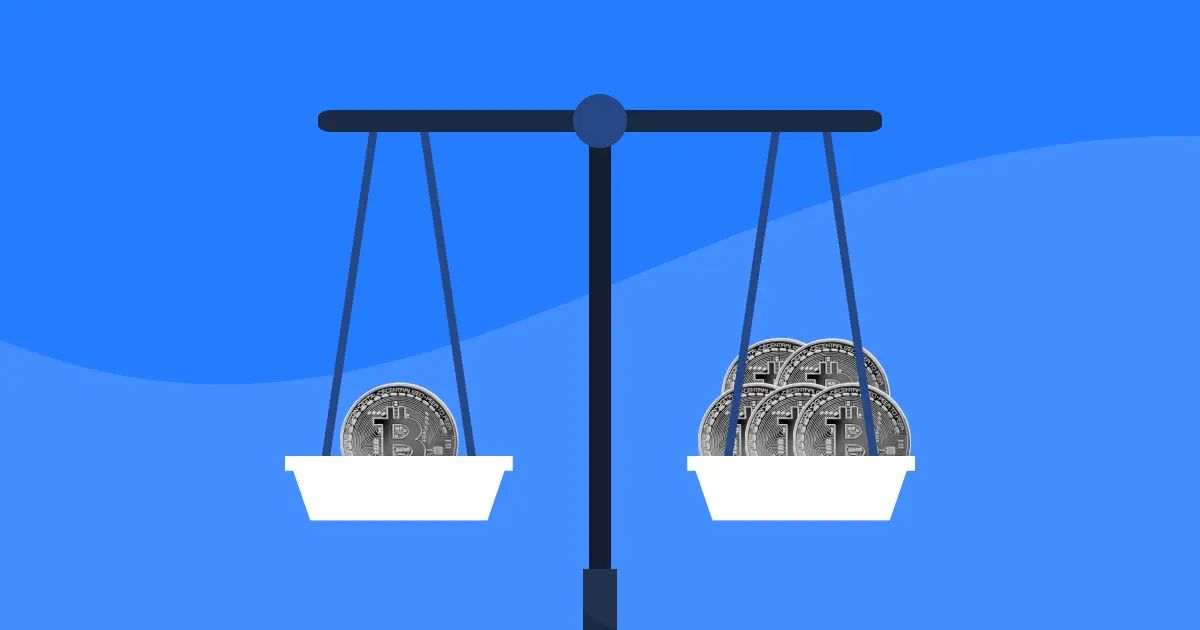Introduction
Are you tired of receiving incessant phone calls from LendingTree? The constant interruptions and unwanted solicitation can be incredibly frustrating. Fortunately, there are steps you can take to put an end to these calls and regain your peace of mind. In this article, we will discuss why you are receiving calls from LendingTree and provide you with effective solutions to stop them.
LendingTree, a popular online marketplace that connects borrowers with lenders, may contact you if you have previously interacted with their services or expressed an interest in their loan offerings. While it is understandable that they want to reach out to potential customers, it can be overwhelming to receive repeated calls.
Rest assured, there are legal measures you can take to halt these unwanted calls. The options range from registering your number on the National Do Not Call Registry to directly contacting LendingTree to request that they cease contacting you. By following these steps, you can regain control over when and how you receive communication from LendingTree.
It’s important to note that while the methods outlined in this article can be effective in reducing or stopping calls from LendingTree, there is no guarantee that they will completely cease. Some calls may still slip through the cracks. However, by implementing these strategies, you can significantly minimize the frequency of such calls and reclaim your privacy.
Now, let’s delve into the various methods you can use to stop LendingTree calls once and for all.
Why are you receiving calls from LendingTree?
If you find yourself on the receiving end of numerous calls from LendingTree, there are a few reasons why this may be happening. Understanding these reasons can help you tackle the issue more effectively. Here are some possible explanations:
- You filled out a loan application or inquiry: LendingTree is a popular platform for borrowers to request loan quotes from multiple lenders. If you have recently filled out a loan application or inquiry, it’s likely that LendingTree has obtained your contact information and is following up with you regarding your loan options.
- You provided your contact information for a quote: LendingTree allows borrowers to provide their contact information to get a personalized loan quote. If you have entered your details on LendingTree’s website or a partner site, this can trigger them to contact you with loan offers and other related information.
- You created an account: Creating an account on the LendingTree website to track your loan applications or receive updates can result in receiving periodic calls from their representatives to provide assistance or inform you of new loan opportunities.
- You expressed interest in their services: If you have shown interest in LendingTree’s services by clicking on their online ads or subscribing to their newsletters, this can also lead to receiving calls from them.
- Third-party leads: LendingTree may obtain leads from third-party sources, such as affiliate websites or lead generation companies. If your contact details were shared with LendingTree by a third party, they may reach out to you through phone calls.
It’s important to note that LendingTree’s contact with you is not necessarily unwarranted or illegal. As a lending marketplace, they have a legitimate interest in connecting borrowers with potential lenders. However, if the frequency of their calls becomes overwhelming, it is within your rights to take steps to reduce or stop them altogether.
In the next section, we will explore various methods to opt-out of LendingTree calls and regain control over your phone’s peace and quiet.
How to opt-out of LendingTree calls
If you’re looking to put an end to the barrage of LendingTree calls, you’ll be relieved to know that there are several options available to opt out. Whether you prefer a simple online registration process or direct communication with LendingTree, here are the steps you can take:
- Registering for the National Do Not Call Registry: One of the most effective ways to prevent unwanted telemarketing calls, including those from LendingTree, is to register your phone number on the National Do Not Call Registry. This free service allows you to add your number to a database that telemarketers are legally required to honor. To register, visit the official website of the National Do Not Call Registry and follow the registration process, which typically involves providing your phone number and email address.
- Contacting LendingTree directly: If you prefer a more direct approach, you can contact LendingTree and ask them to remove your phone number from their calling list. You can reach out to them through their customer service hotline or use their online contact form to submit your request. Be sure to provide your name, phone number, and any other relevant information to ensure they can locate your account and process your opt-out request.
It’s worth noting that even if you opt out of LendingTree’s calls, you may still receive non-telemarketing calls related to an existing loan application or account. These can include calls regarding loan status updates, verification of information, or reminders for required documentation. However, these calls should be limited to the necessary communication for your specific loan transaction.
In the next section, we will explore additional steps you can take to further reduce unwanted calls from LendingTree and other telemarketers.
Registering for the National Do Not Call Registry
One of the most effective ways to stop unwanted telemarketing calls, including those from LendingTree, is by registering your phone number on the National Do Not Call Registry. The National Do Not Call Registry is a free service provided by the Federal Trade Commission (FTC), and it allows you to add your number to a database that telemarketers are legally required to honor.
To register for the National Do Not Call Registry, follow these steps:
- Visit the official website: Start by visiting the official website of the National Do Not Call Registry. You can access the website by typing “donotcall.gov” in your web browser’s address bar.
- Click on “Register a Phone Number”: Once you’re on the National Do Not Call Registry website, locate and click on the “Register a Phone Number” option. This will take you to the registration page.
- Provide your information: On the registration page, you’ll be asked to provide your phone number, including the area code, and your email address. Fill out these fields accurately to ensure that your registration is successful.
- Verify your email address: After submitting your phone number and email address, you will receive an email from the National Do Not Call Registry. Open the email and click on the link provided to verify your email address. This step is crucial for completing the registration process.
- Confirm your registration: Once you’ve verified your email address, you will receive another email confirming your registration with the National Do Not Call Registry. This email serves as a confirmation that your phone number has been added to the registry.
It’s important to note that while registering for the National Do Not Call Registry can significantly reduce telemarketing calls, it may not eliminate all of them. Some organizations, such as charities, political organizations, and survey providers, are exempt from the registry’s requirements. However, commercial telemarketing calls, including those from LendingTree, should be minimized once your number is on the registry.
In the next section, we will explore another option to stop LendingTree calls by contacting them directly.
Contacting LendingTree directly
If you prefer a more direct approach to stopping LendingTree calls, you have the option of reaching out to them directly and requesting that they remove your phone number from their calling list. While it may take a little more effort, contacting LendingTree can be an effective way to ensure that you no longer receive unwanted calls from their representatives.
Here are the steps you can take to contact LendingTree and opt out of their calls:
- Gather your information: Before contacting LendingTree, gather any relevant information that might help them locate your account, such as your name, phone number, email address, and any other details associated with your interactions with them.
- Customer service hotline: One of the easiest ways to get in touch with LendingTree is by calling their customer service hotline. Locate their contact number on their official website or any communication you have received from them, and dial the number to speak with a representative. Explain your situation and politely request that they remove your phone number from their calling list.
- Online contact form: If you prefer written communication, you can use LendingTree’s online contact form to submit your opt-out request. Visit their website and navigate to the “Contact Us” or “Support” section, where you will likely find an online form to fill out. Provide the necessary details, including your name, phone number, and any other relevant information, and clearly state that you wish to be removed from their call list.
- Follow up: After contacting LendingTree, it may be a good idea to follow up on your request. If you spoke with a representative over the phone, ask for their name and make a note of the date and time of your call. If you used the online contact form, keep a record of the submission confirmation. This will help you track your communication with LendingTree and provide reference in case you continue to receive calls after your request.
Remember to remain patient and polite throughout your interactions with LendingTree. While they are obligated to honor your opt-out request, being respectful can facilitate a smoother process. If you continue to receive calls from LendingTree after making an opt-out request, you may need to explore further measures, which will be discussed in the following sections.
Next, we will cover how to block LendingTree calls on your phone.
Blocking LendingTree calls on your phone
If you are still receiving calls from LendingTree despite your opt-out efforts, blocking their calls on your phone can provide an additional layer of defense against unwanted interruptions. While this method may not completely eliminate all calls, it can significantly reduce the frequency of LendingTree calls. Here are some options to consider:
- Built-in call blocking: Many modern smartphones offer built-in call blocking features. Check your phone’s settings or call settings to see if there is an option to block specific phone numbers. You can manually add LendingTree’s phone number to the block list, and any calls from them will automatically be redirected to voicemail or blocked outright.
- Third-party call-blocking apps: If your phone’s built-in features are limited, you can explore various call-blocking apps available for both Android and iOS devices. These apps provide additional customization options and features to block unwanted calls. Research and choose a reputable app from your respective app store, and follow the instructions to block LendingTree’s calls.
- Contact your carrier: Another option is to contact your mobile service provider and inquire about call-blocking services they offer. Some mobile carriers may have their own call-blocking features or recommendations for third-party apps that work well with their network. Reach out to their customer service and ask for assistance in blocking calls from specific numbers.
It’s important to periodically check your call logs to ensure that the blocking features are effectively filtering out LendingTree calls. In some cases, telemarketers may use different phone numbers or spoof their caller ID to avoid being blocked. If you continue to receive calls, consider utilizing other methods discussed in this article or reporting the unwanted calls to the appropriate authorities, as we will explore in the next section.
Now that we have covered blocking LendingTree calls on your phone, let’s move on to the procedure of reporting unwanted calls to the Federal Trade Commission (FTC).
Reporting unwanted calls to the Federal Trade Commission (FTC)
If you have exhausted all other options and are still receiving persistent and unwanted calls from LendingTree or any other telemarketers, it may be time to report these calls to the Federal Trade Commission (FTC). The FTC is a government agency tasked with protecting consumers and regulating telemarketing practices. By reporting unwanted calls, you not only take steps to protect yourself but also contribute to the collective effort in combating illegal or harassing telemarketing practices.
Here’s how you can report unwanted calls to the FTC:
- Access the FTC Complaint Assistant: Start by visiting the official website of the FTC and navigating to the Complaint Assistant section. The Complaint Assistant is an online tool provided by the FTC to guide you through the process of reporting unwanted calls.
- Select the appropriate category: Within the Complaint Assistant, you will be prompted to select the category that best describes your complaint. In this case, you would choose “Unwanted calls” or a similar option related to telemarketing practices.
- Provide the necessary details: The Complaint Assistant will guide you through a series of questions to gather relevant information about the unwanted calls. This may include details about the caller, the nature of the calls, and any additional information you have, such as phone numbers or call dates and times. Provide as much accurate information as possible to help the FTC assess and investigate your complaint.
- Submit the complaint: Once you have filled out all the required information, review your complaint and confirm that everything is accurate. Then, submit the complaint to the FTC by following the instructions provided on the Complaint Assistant website.
By reporting unwanted calls to the FTC, you contribute to a database of complaints that helps the agency identify trends, track down violators, and take action against telemarketers who engage in illegal or fraudulent practices. While individual complaints may not lead to immediate resolution, your participation adds to the collective effort in combating unwanted calls.
It’s important to note that reporting unwanted calls to the FTC does not guarantee an immediate halt to the calls or resolution of the issue. However, it is an important step in holding telemarketers accountable and may contribute to long-term improvements in the telemarketing industry.
In the next section, we will provide some additional tips to help reduce unwanted calls, including those from LendingTree.
Additional tips to reduce unwanted calls
While taking the specific measures mentioned earlier can help minimize unwanted calls from LendingTree and other telemarketers, there are also additional steps you can take to further reduce the frequency of these calls. Consider implementing the following tips:
- Be cautious with your personal information: Be mindful of sharing your phone number, especially online or on forms that may be accessible to third parties. Limit the instances where you provide your contact information to trusted sources to minimize the likelihood of your details being passed on to telemarketers.
- Screen your calls: Let unfamiliar numbers go to voicemail, especially if you suspect they may be telemarketing calls. Legitimate callers will typically leave a message, allowing you to prioritize which calls to return.
- Check privacy policies: Whenever you provide your phone number to a company or website, take a moment to review their privacy policy. Ensure they have measures in place to protect your personal information and that they do not share it with third parties for marketing purposes.
- Use caller ID to your advantage: If your phone displays caller ID information, use it to identify calls from unfamiliar numbers. By verifying the identity of the caller before answering, you can avoid unwanted calls and potential scams.
- Report violators to your carrier: If you continue to receive unwanted calls despite your efforts, report the numbers to your mobile carrier. They may have processes in place to investigate and take action against repeat offenders.
- Stay informed about scams: Keep yourself informed about the latest scams and tactics used by telemarketers and fraudsters. Awareness of popular scams can help you recognize suspicious calls and avoid falling victim to them.
Remember that reducing unwanted calls is an ongoing process. It may take some time to see a significant decrease in calls, but by implementing these tips along with the previously mentioned methods, you can take proactive steps to protect yourself from unwanted solicitations.
With the combination of registering for the National Do Not Call Registry, contacting LendingTree directly, blocking calls on your phone, reporting to the FTC, and implementing these additional tips, you can regain control over your phone and enjoy a more peaceful experience free from unwanted interruptions.
Conclusion
Dealing with unwanted calls from LendingTree and other telemarketers can be a frustrating experience. Thankfully, there are effective strategies you can utilize to put an end to these interruptions and regain control over your phone. By registering your number on the National Do Not Call Registry, contacting LendingTree directly to opt out, blocking their calls on your phone, reporting unwanted calls to the Federal Trade Commission (FTC), and implementing additional tips to reduce unwanted calls, you can significantly reduce the frequency of unwanted calls and protect your privacy.
It’s important to remember that while these methods are generally successful, there is no guaranteed solution to completely stop all unwanted calls. Some calls may still slip through the cracks or come from different numbers. However, by implementing these strategies and staying vigilant, you can minimize the nuisance and reclaim your peace of mind.
Remember to exercise caution when sharing your personal information and familiarize yourself with privacy policies to prevent your contact details from being shared with telemarketers. Additionally, stay informed about the latest scams and report any violations to your mobile carrier or the appropriate authorities to help combat illegal and fraudulent telemarketing practices.
By taking proactive steps and utilizing the various methods outlined in this article, you can regain control over your phone and enjoy a more peaceful and uninterrupted life.

























